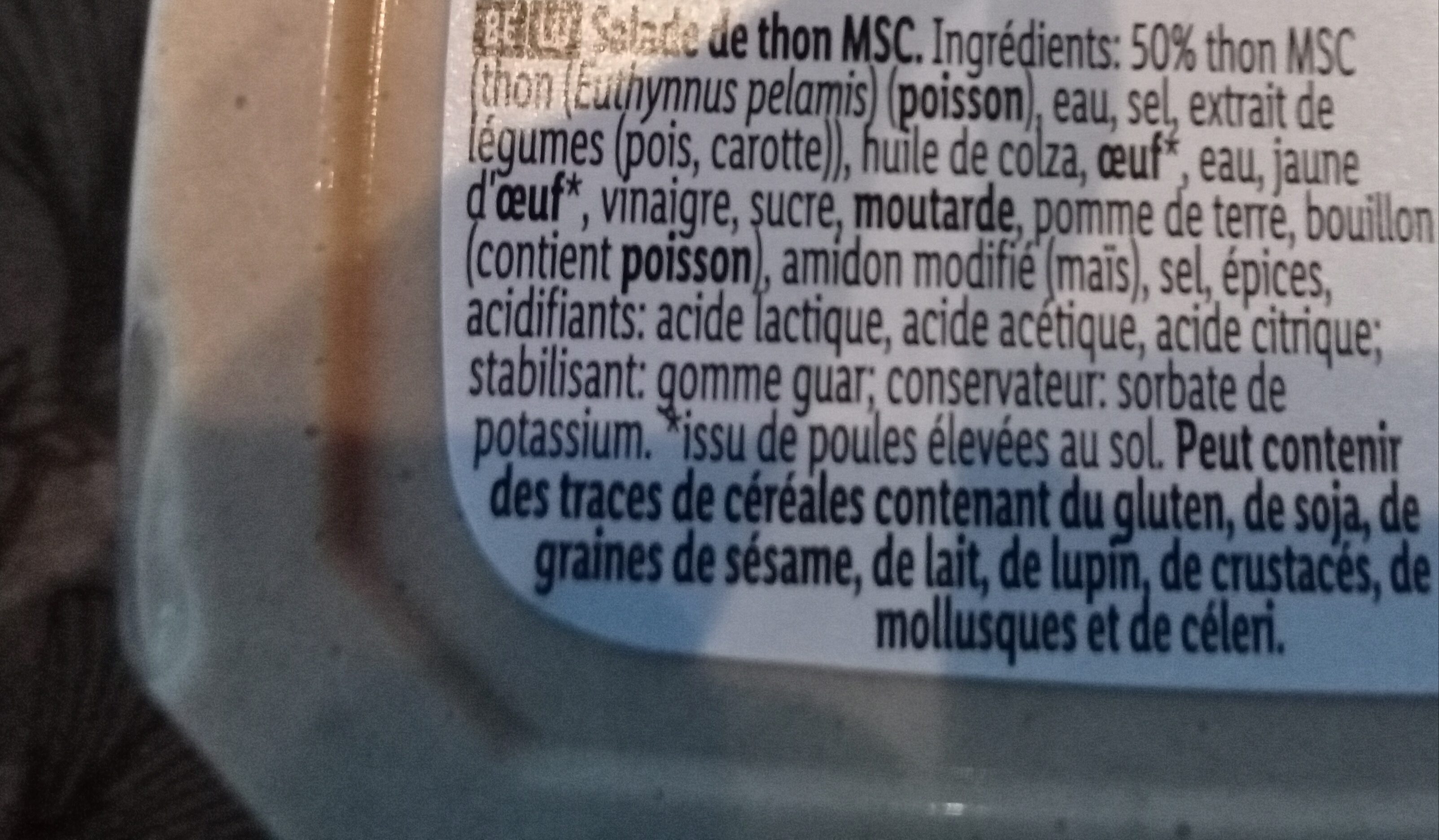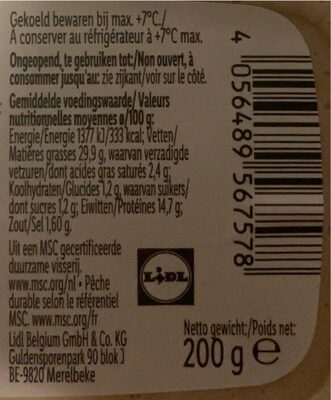Salade de thon - Chef Select - 200 g
This product page is not complete. You can help to complete it by editing it and adding more data from the photos we have, or by taking more photos using the app for Android or iPhone/iPad. Thank you!
×
Barcode: 4056489567578 (EAN / EAN-13)
Quantitéit: 200 g
Marken: Chef Select
Kategorien: en:Seafood, en:Fishes and their products, en:Fishes, en:Spreads, en:Fish preparations, en:Fish spreads, en:Tuna spreads
Labelen, Zertifizéierungen, Auszeechnungen:
en:Sustainable, en:Sustainable fishery, MSC
Traceability code: MSC-C-55542
Geschäfter: Lidl
Country: Lëtzebuerg (Land)
Matching with your preferences
Environment
Verpackungsart
Transportation
Labels
Report a problem
Data sources
Product added on vun kiliweb
Last edit of product page on vun xoo.
Produkt Säit och geännert vun alexfauquette, inf, moon-rabbit, roboto-app, schif, teolemon, yuka.sY2b0xO6T85zoF3NwEKvlm9gcdncpzH_bBfWm02x5_PSFcC4YIxv2I7haqs, yuka.sY2b0xO6T85zoF3NwEKvln1Oc4Dzjxf-CDLQkk2gl8e-d8fKee9cxanaaqs, yuka.sY2b0xO6T85zoF3NwEKvln5-f_T4i27iPjrvlEiZzfG0cZbpbY1y0q7FIqg.












